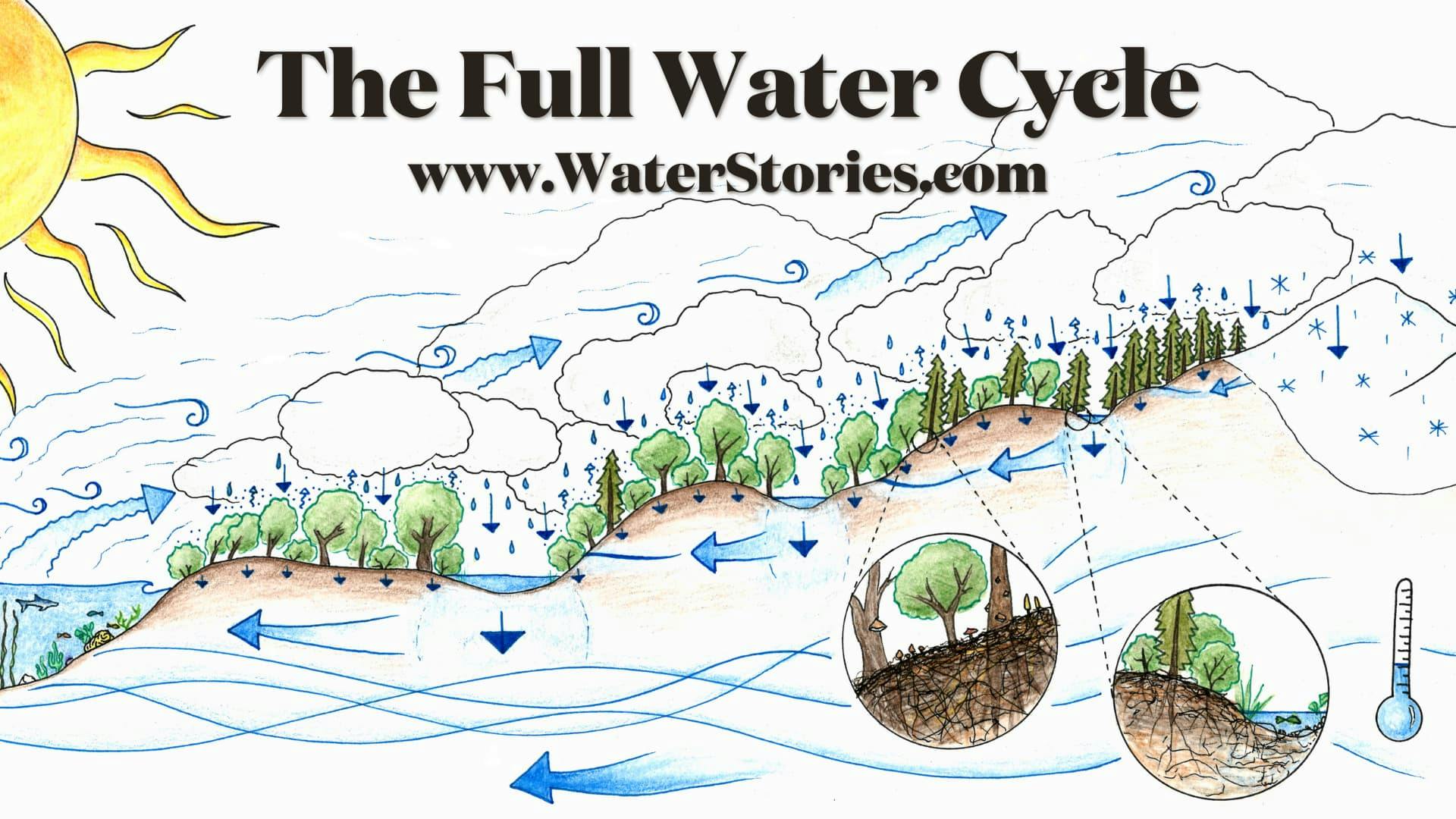Animation
The Full Water Cycle
The Full Story
Most of us have been taught an over simplified story of the water cycle. The full water cycle is much more complicated and interconnected than what we learned in school. Here, we tell the whole story.

Cloud Formation
The sun’s energy turns liquid water into vapor. Water vapor can make up 4% of the volume of air; 40,000ppm. This water vapor drifts inland from the coasts. For this water vapor to condense into droplets, forming clouds and then rain, it needs nuclei to form around. What does that mean? It needs a particle that the water vapor can start to condense upon, then it can gather mass and volume in order to form a droplet. Precipitation nuclei can be ice crystals, salts, or microorganisms. Hygroscopic (attracts water) microorganisms can account for 50-80% of the precipitation received. Where do these microorganisms grow? Within the leaves (stomatal cavities) of trees, using the surplus sugars from photosynthesis as a food source.
Phase Changes of Water
Phase changes of water involve a tremendous amount of heat and energy. As water vapor condenses from gas to liquid it releases 590 calories of heat per gram. This heat is released into the upper atmosphere and largely dissipates into space. Clouds, once formed, reflect the sun’s radiation, further cooling the climate.
The Biotic Pump
The phase change from gas (large) to vapor (small) also creates a big change in volume, resulting in a drop in pressure. This acts like a vacuum, drawing in more humid air from the coast. This process of droplet formation and rain, by nature of the physical properties of water, draws in moist, low pressure air from the coast. Through this mechanism, the biotic pump, water is delivered from the coasts through Earth’s land masses.
A Conveyor Belt of Cooling
As vegetation transpires water (part of photosynthesis), the water absorbs a tremendous amount of heat energy (590 calories/gram) as it is converted from liquid to gas. This heat is carried away from the surface of the Earth, into the atmosphere, by the stream of rising water vapor. This contributes a very significant amount of water to the atmosphere, accounting for roughly half of the precipitation received. As the vapor condenses back into liquid, it releases the heat/energy that was absorbed at the surface. These biological and physical processes cool the planet by carrying heat away from the Earth’s surface, and dissipating it into space.
Soil and Hydrology
With the surface of the earth sheltered and protected from the sun, the soil stays cool and moist. It is therefore able to quickly absorb the warmer falling rain. The water infiltrates deep into the earth along the roots of vegetation, recharging aquifers. This water then returns purified, mineralized, and energized as springs. This provides for ample water for photosynthesis throughout the year, with the cooling effect of transpiration buffering against temperature extremes. The water flowing through the Earth keeps rivers and lakes cool and clean, providing for a healthy aquatic system and water abundance.
Feedback Loops
This is a feedback loop of productivity and abundance, leading to a balanced and stable climate; the natural state of Earth. The Full Water Cycle is increasingly disrupted, disturbed, and contaminated; this is called the Watershed Death Spiral.